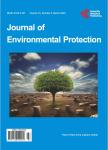Assessment of Environmental Cleaning Practices and the Impacts on Infection Prevention and Control in Selected Hospitals in Tanzania
Assessment of Environmental Cleaning Practices and the Impacts on Infection Prevention and Control in Selected Hospitals in Tanzania作者机构:Ministry of Health Community Development Gender Elderly and Children Dodoma Tanzania Department of Chemical and Mining Eng. University of Dar es Salaam Dar es Salaam Tanzania World Health Organization (WHO) Tanzania Dar es Salaam Tanzania Department of Environmental Studies The Open University of Tanzania Dar es Salaam Tanzani National Institute of Medical Research Dar es Salaam Tanzania National Council for Technical Education Dar es Salaam Tanzania
出 版 物:《Journal of Environmental Protection》 (环境保护(英文))
年 卷 期:2022年第13卷第10期
页 面:698-715页
学科分类:08[工学] 0812[工学-计算机科学与技术(可授工学、理学学位)]
主 题:Environmental Cleaning Infection Prevention Sanitation Hand Hygiene and Water Supplies
摘 要:To achieve Sustainable Development Goal (SDG) in healthcare facilities (HCFs,) the provision of water, sanitation, healthcare waste management, hand hygiene and environmental cleanliness services is crucial. Good WASH services in HCFs settings have the potential to reduce healthcare acquired infections (HAIs), increase trust and uptake of healthcare services, increase efficiency and improve staff morale. To address this, a National Assessment was carried out to ascertain environmental cleanliness condition of the healthcare facilities at all levels. The assessment of healthcare waste management in the facilities was conducted in all the 26 regions of Tanzania Mainland including districts and lower healthcare facilities. A standardized checklist and tools were used to assess and monitor various aspects related to healthcare waste management using open source software for data collection (ODK). Data were analyzed using SPSS computer software. It was observed that most of permanent staff (88%) in the Healthcare facilities had knowledge on hand hygiene, but the gap was observed to the waste handlers (12%) who were not equipped with the hand hygiene knowledge. About 89% of the hand washing stations were available at mortuary units, followed by 75% at main entrance and the lowest was 3% at waste zone areas of the healthcare facilities. Hand washing materials like soap were mainly found at theaters (64%) followed by mortuary (60%) and last at waste zones. The assessment concludes that handling of healthcare wastes is not practiced to the expectations, and there is a need to strengthen the situation. The findings provide evidence for those engaged in improving HCF conditions to develop evidence-based policies and efficient programs, enhance service delivery systems, and make better use of available resources.



